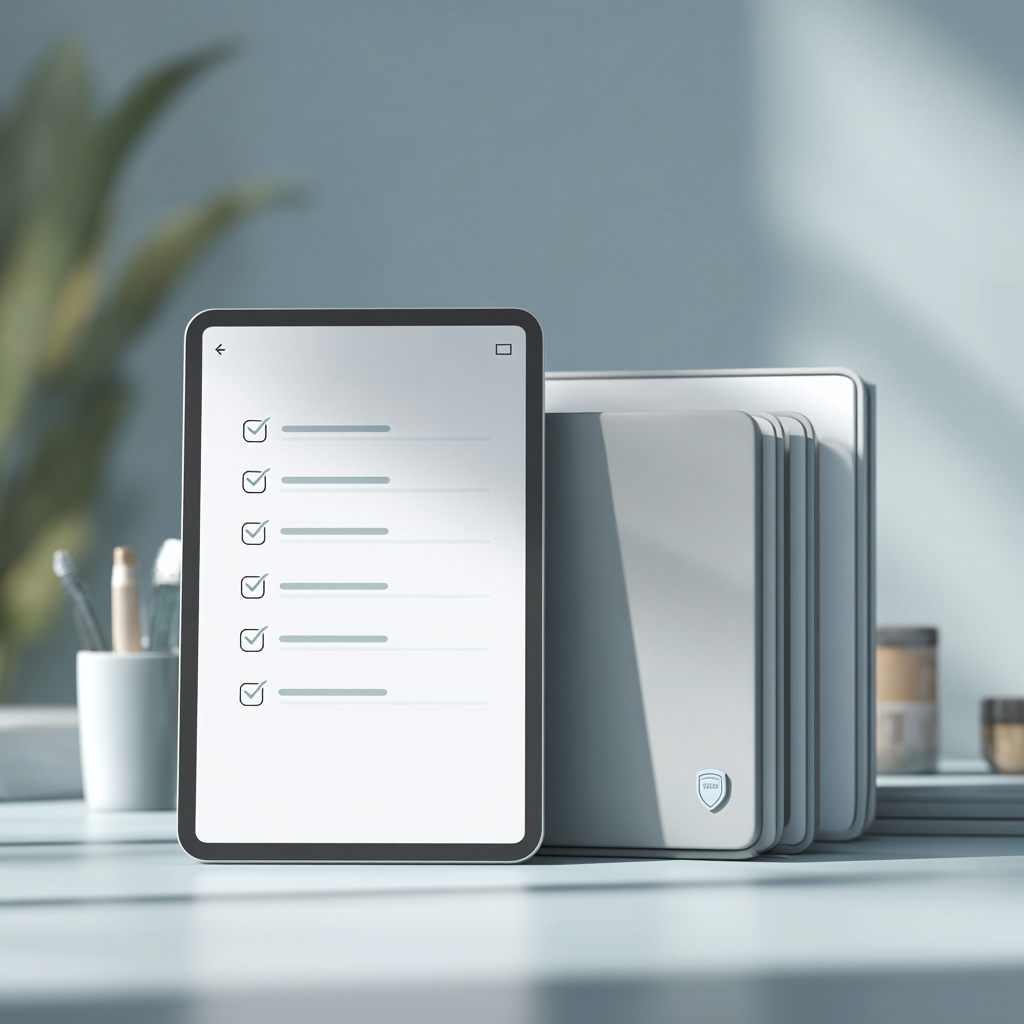

Effective due diligence is integral to mergers and acquisitions (M&A). About 25% of M&A practitioners worldwide name it as a main factor leading to deal success.
Indeed, due diligence allows uncovering all potential issues that could harm the deal and timely address them, so the deal doesn’t fail. One of the ways to ensure thorough due diligence that touches every aspect of the target’s operations is a due diligence questionnaire (DDQ).
This article walks you through the fundamentals of due diligence questionnaires, highlights their benefits, and shows how to make the most of them with virtual data rooms (VDRs). Additionally, you get a due diligence questionnaire template to use for inspiration when crafting one for your needs.
Highlights:
- A due diligence questionnaire is a list of questions sent out to the target or vendor as a part of the due diligence process.
- The goal of the due diligence questionnaire is to assess risks, financial health, legal compliance, and overall operations of the target company or vendor before entering any type of business relationship with it.
- Key components of DDQ include ownership structure, financial information, legal and regulatory compliance data, operations and IT, cybersecurity implementation, business continuity, organizational structure and HR, and risks.
- To ensure straightforward due diligence and secure the data shared within a due diligence questionnaire, business owners use virtual data rooms.
What is a due diligence questionnaire?
A due diligence questionnaire is a document that helps businesses assess certain aspects of an organization before initiating any kind of collaboration with it. It’s a list of questions designed to assess risks, financial health, legal compliance, and overall operations of the target company.
DDQs are typically sent over to target companies or new vendors as a part of the onboarding process. However, sometimes DDQs can be sent to existing vendors as well to ensure compliance with pre-defined agreements and better risk management.
Due diligence questionnaires are used during the due diligence process in such cases:
- M&A. When one company buys or merges with another, it’s important to understand exactly what they are getting. A DDQ helps buyers check the financial health, legal status, assets, debts, and overall risks of the target company. It can uncover hidden issues, such as lawsuits or declining profits, which may affect the deal. Knowing all these aspects, the buyer can make an informed decision.
- Investments. Investors use a DDQ to evaluate whether a company or project is worth funding. The questionnaire covers details like business strategy, revenue, legal risks, and market potential. It helps investors determine if the company is stable, profitable, and aligned with their goals.
- New business relationship. About 82% of companies provide third-party vendors access to their cloud data. At the same time, 98% of organizations deal with third parties that have experienced a data breach. It highlights the huge risk businesses face when entering a new business relationship. And that’s exactly why they use DDQs to ensure working with a new vendor is secure.
- Existing vendor due diligence. Businesses also regularly review existing vendors to ensure they still meet quality, security, and legal standards. It can be on a quarterly or annual basis, depending on the pre-defined agreements.
- Proactive sell-side due diligence. Sometimes, companies preparing for a sale or investment round use a DDQ to identify and fix potential issues before buyers or investors conduct their own review. Then, when potential buyers come into the light, they can share results with all of them instead of doing so for each one individually. This can significantly speed up the deal.
Key components of a due diligence questionnaire
The areas to include in the due diligence questionnaire depend on the goal you pursue with the due diligence. However, the most common components are the following.
Ownership and employees
This section examines the company’s ownership structure, key stakeholders, and workforce composition. It might include:
- Ownership details. Cap table, the percentage ownership of major shareholders, and any restrictions.
- Employee data. Headcount, key personnel, turnover rates, and employment agreements.
- Contracts and benefits. Employee stock options, pension plans, and contractual obligations.
- Labor issues. Pending disputes, union relationships, and regulatory compliance.
Financial information
This is a deep dive into the company’s financial health, historical performance, and projections. It can review the following aspects:
- Financial statements. Audited balance sheets, income statements, and cash flow statements.
- Debt and liabilities. Outstanding loans, credit agreements, and contingent liabilities.
- Revenue breakdown. –Top customers, recurring vs. non-recurring revenue, and revenue recognition policies.
- Budgeting and forecasting. Future financial plans, growth expectations, and cost structure.
Legal and regulatory compliance
This section evaluates the company’s adherence to regulatory requirements and legal obligations:
- Corporate structure. Articles of incorporation, bylaws, and subsidiaries.
- Contracts and agreements. Vendor, customer, and partnership contracts, along with any pending renegotiations.
- Litigation history. Ongoing or past lawsuits, settlements, and regulatory investigations.
- Intellectual property (IP). Patents, trademarks, copyrights, and licensing agreements.
Operations and IT
Here, the DDQ focuses on the company’s day-to-day business processes and technology infrastructure:
- Supply chain and logistics. Key suppliers, procurement processes, and operational dependencies.
- IT infrastructure. Systems, databases, software, and internal technology capabilities.
- Scalability and automation. Assessment of process automation and future IT scalability.
Cybersecurity implementation
This section assesses the company’s approach to protecting data and digital assets. The question might be related to:
- Security policies and frameworks. Adoption of industry standards (ISO 27001, NIST, etc.).
- Data protection. Encryption practices, access controls, and compliance with GDPR, CCPA, or other regulations.
- Incident history. Past breaches, cybersecurity incidents, and response measures.
- Third-party risks. Security practices of vendors and partners with access to company systems.
Business continuity
The goal of this section is to ensure the company has risk mitigation strategies in place for any potential disruptions:
- Disaster recovery plans. Strategies for maintaining operations during crises.
- Redundancy and backup systems. Data recovery, alternative supply chains, and emergency response teams.
- Insurance coverage. Policies covering business interruptions, cyber threats, and liability.
HR and organizational structure
This is all about leadership, workforce policies, and organizational efficiency:
- Org chart and reporting lines. Key decision-makers and team structures.
- Compensation and benefits. Salary benchmarks, bonuses, and employee incentives.
- Training and development. Upskilling programs, retention strategies, and leadership pipeline.
- Diversity and inclusion. Workforce demographics and company DEI initiatives.
Environmental, Social, and Governance (ESG)
This section evaluates the company’s sustainability and corporate responsibility:
- Environmental impact. Carbon footprint, energy usage, and sustainability policies.
- Social responsibility. Community engagement, employee well-being, and fair labor practices.
- Governance practices. Board structure, ethical guidelines, and anti-corruption measures.
Risks
Here, the goal is to evaluate potential threats that could affect the company’s valuation and stability:
- Market risks. Competitor analysis, industry trends, and economic factors.
- Operational risks. Supply chain dependencies, key personnel risks, and compliance gaps.
- Financial risks. Liquidity challenges, debt exposure, and credit risk.
- Regulatory and legal risks. Potential fines, regulatory changes, and litigation threats.
How to create an effective due diligence questionnaire
Here are some of the best practices to create an actionable due diligence questionnaire:
- Define the strategy. First things first, you should outline the purpose of DDQ and key objectives. Identify what information is critical for decision-making and ensure the questions align with the transaction’s goals.
- Tailor the questionnaire to the transaction type. Different use cases require different levels of risk assessment. For instance, mergers and acquisitions will focus on financial, legal, and operational components. Vendor due diligence will target how an organization handles data security approaches.
- Standardize some questions. While every case is unique, certain questions, such as financial statements, legal compliance, and ownership structure, might apply across most use cases. Using a core set of standardized questions helps maintain consistency, simplifies comparisons between different types of due diligence, and speeds up the review process.
- Keep questions clear and specific. Each question should be direct and leave no room for misinterpretation. For example, instead of asking, “Are there any risks?” a more effective question would be “Has the company faced any regulatory penalties in the past five years?”.
- Ensure data privacy and security when handling responses. Store responses on secure platforms with access controls, encrypt sensitive files and comply with relevant data protection regulations. Limiting access to only authorized personnel helps prevent data breaches and ensures data confidentiality.
- Use templates. If you don’t know where to start, opt for ready-to-use templates. You can find many of them on the internet or use the one we provide further. Such a template gives an understanding of what DDQ can look like while leaving room for customization. Additionally, you can create a template on your own to use any time you need to perform due diligence.
- Leverage technology. Digital tools and software can simplify the due diligence process by automating data collection, tracking responses, and organizing documents. For instance, virtual data rooms are designed to secure confidential data and streamline due diligence.
Due diligence questionnaire template
This is an example of what a due diligence questionnaire can look like. You can use it when drafting the one for your due diligence but customize it based on your needs. For instance, you might not need each section, or questions will be different.
| Section | Question example |
| Ownership and employees | – What is the company’s ownership structure, including shareholders and their percentage stakes? – Are there any shareholder agreements, voting rights, or restrictions on ownership transfer? – Provide a breakdown of employee headcount by department, seniority, and location. – Are there any pending or historical employee disputes or labor-related legal actions? |
| Financial information | – Provide the company’s last three years of audited financial statements. – What are the primary revenue streams and their respective contribution to total revenue? – List all outstanding debt, loans, and financial obligations, including repayment terms. – Are there any off-balance-sheet liabilities or financial contingencies? |
| Legal and compliance | – Provide an overview of the company’s legal entity structure, including subsidiaries and joint ventures. – Are there any ongoing or past legal disputes, investigations, or regulatory actions? – Does the company own or license any intellectual property (IP), such as patents, trademarks, or copyrights? – Are all key customer, vendor, and partnership contracts up to date and enforceable? |
| Operations and IT | – What are the company’s core operational processes and key dependencies? – What IT systems and infrastructure are currently in place? – Is there a strategy for scaling operations and technology in the future? – Are there any third-party service providers critical to business operations? |
| Cybersecurity implementation | – What cybersecurity frameworks or standards does the company follow? – Have there been any past cybersecurity incidents or data breaches? If so, how were they handled? – How is sensitive data protected (e.g., encryption, access control)? – Are there cybersecurity audits or penetration testing results available? |
| Business continuity | – Does the company have a formal business continuity or disaster recovery plan? – What redundancy measures are in place to mitigate operational disruptions? – What types of insurance policies does the company maintain, and what do they cover? |
| HR | – Provide an organizational chart showing reporting structures. – What are the key compensation and incentive programs for employees? – How does the company handle employee performance management and training? – Are there diversity, equity, and inclusion (DEI) initiatives in place? |
| ESG | – What environmental sustainability policies or initiatives does the company follow? – How does the company contribute to social responsibility and community engagement? – What governance policies exist for ethical decision-making and compliance? |
| Risks | – What are the key market risks that could impact the company’s performance? – Are there any major operational risks, including supply chain vulnerabilities? – How does the company manage financial risks such as liquidity and currency exposure? – Are there any regulatory risks or potential compliance challenges in the company’s industry? |
A few more DDQ templates for you to get inspired:
- DDQ for institutional investors by the Institutional Limited Partners Association
- DDQ for business partners by ACC
- Hedge fund DDQ by PRI
Benefits of using a due diligence questionnaire
Here’s what you get when using due diligence questionnaires:
- Time-efficiency. A structured questionnaire speeds up the due diligence process by providing a clear framework for collecting and reviewing information. Instead of searching for missing details or clarifying vague answers, teams receive well-organized responses upfront. This reduces back-and-forth communication, shortens review timelines, and allows deals to move forward faster.
- Risk mitigation. With DDQ, you can identify risks early which helps in decision-making and ensures a responsible investment strategy. By systematically collecting data, companies can detect red flags, address compliance concerns, and avoid costly surprises later.
- Enhanced decision-making. Well-structured questionnaires provide clear and comparable data, making it easier to analyze a company’s strengths, weaknesses, and overall stability. This helps decision-makers assess opportunities more accurately and make informed choices based on facts rather than assumptions.
Using VDR to manage due diligence questionnaires
Virtual data room solutions make handling due diligence questionnaires easier, faster, and more secure. They provide a central platform where teams can store, organize, and share important documents while keeping sensitive information protected.
Here’s how virtual data rooms help manage DDQs:
- Secure document sharing. VDRs offer a secure cloud-based repository for sensitive data storing and sharing. They enable sharing of DDQs and their results so that no unauthorized users have access to them.
- Automated workflows. VDRs streamline the process with automation. Teams can set up workflows to automatically send questionnaires, track responses, and flag missing information. This reduces manual effort and speeds up the review process.
- Collaboration tools. Thanks to Q&A sections deal sides can effectively collaborate on DDQs. For instance, when sharing a DDQ with a vendor or target, they can post questions to any part of the DDQ file so that you can promptly provide them with extra explanations.
- Advanced access controls. VDR administrators can decide who can view, edit, and download files inside a virtual data room space, which ensures an extra level of security.
Summing up
A due diligence questionnaire is a structured tool used in mergers, acquisitions, investments, and vendor assessments to evaluate a company’s financial health, legal compliance, and operational stability.
It helps organizations make informed decisions by identifying potential risks early, ensuring transparency, and speeding up the due diligence process. Key components of a DDQ include financial statements, ownership details, legal obligations, cybersecurity measures, and business continuity plans, all tailored to the transaction type.
Using virtual data rooms enhances the management of DDQs by providing secure document sharing, automated workflows, and collaboration tools that improve efficiency and security.
To streamline your due diligence process and protect sensitive data, consider integrating a VDR solution and start by exploring top providers.
FAQ
What is the purpose of a due diligence questionnaire?
It helps businesses gather important information about a company before making investment, acquisition, or partnership decisions. It assesses financial health, legal compliance, operational risks, and other key factors to identify potential issues and ensure informed decision-making.
What are the key sections of a due diligence questionnaire?
A DDQ typically includes sections on ownership and employees, financial statements, legal compliance, cybersecurity, operations, business continuity, and risk assessment. These areas provide a complete view of a company’s stability, regulatory obligations, and potential challenges.
How can I ensure the data collected in a due diligence questionnaire remains secure?
To protect sensitive information, store DDQ responses in a secure, access-controlled platform like a virtual data room. Use encryption, limit access to authorized personnel, and follow data protection regulations such as GDPR or CCPA to prevent leaks or breaches.
Can I use templates for due diligence questionnaires?
Yes, templates can save time and ensure consistency in your due diligence process. While they provide a useful starting point, you should customize them to fit the specific transaction, industry, or regulatory requirements.
What is the role of a virtual data room in due diligence?
A virtual data room helps manage, store, and share due diligence documents securely. It offers features like encrypted file storage, automated workflows, and collaboration tools, ensuring efficient and confidential information exchange during the due diligence process.
Recommended for you


